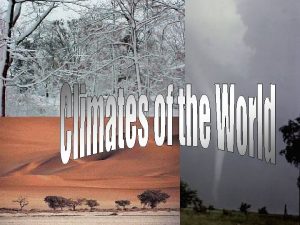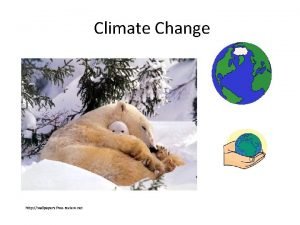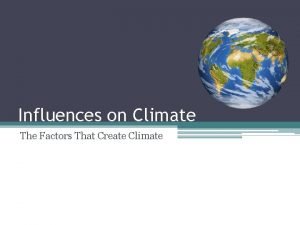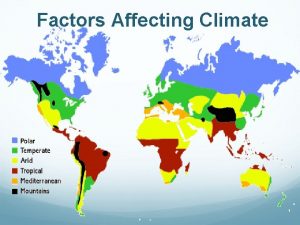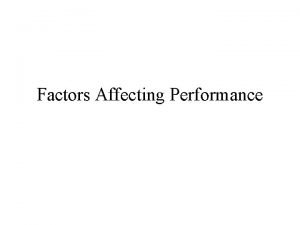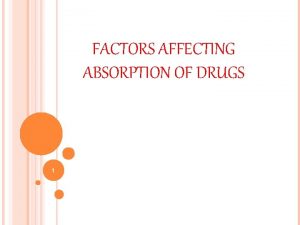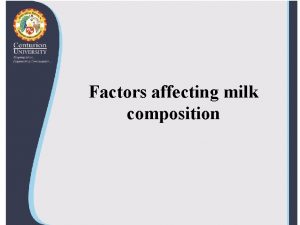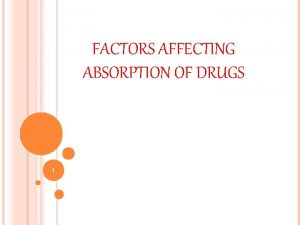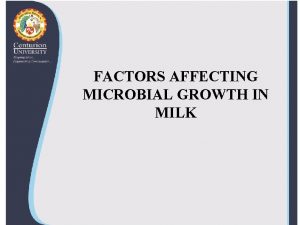Factors Affecting Climate WHAT IS CLIMATE Climate is














- Slides: 14

Factors Affecting Climate

WHAT IS CLIMATE? • Climate is different from weather. • Weather is the atmospheric conditions of a location at that time. • Climate is the average year-by-year conditions of temperature, precipitation, winds, and clouds of an entire area or region on Earth.

Factors: • Latitude • Altitude • Mountains • Distance from the sea • Ocean currents • Direction of prevailing winds • El Nino • Human Influence

1. Latitude • Temperature range increases with distance from the equator. Also, temperatures decrease as you move away from the equator. This is because the suns rays are dispersed over a larger area of land as you move away from the equator. This is due to the curved surface of the earth. In addition polar regions are colder because the suns rays have further to travel compared to place on the equator

2. Altitude • Temperatures decrease with height. The air is less dense and cannot hold heat as easily. Additionally, higher altitudes are further away from heat radiating from the earth’s surface.

3. Mountain Ranges • In the U. S. the west side of mountain ranges get rain. On the east side there are deserts.

• This is called a “rain shadow. ”

4. Distance From the Sea • Land heats and cools faster than the sea. Therefore coastal areas have a lower temperature range than those areas inland. • On the coast, winters are mild and summers are cool. • In inland areas temperatures are high in the summer and cold in the winter.

5. Ocean Currents • Ocean currents have a moderating affect on climate. • Ocean currents can increase or reduce temperatures. The diagram to the right shows the ocean currents of the world. • The Gulf Stream is a warm ocean current in the North Atlantic flowing from the Gulf of Mexico, northeast along the U. S coast, and from there to the British Isles. http

The Gulf Stream keeps the west coast of Europe free from ice in the winter and, in the summer warmer than other places of a similar latitude

6. Direction of Prevailing Winds • In the U. S. the winds move from west to east • This movement is important in determining patterns of precipitation.

7. El Nino • El Nino, which affects wind and rainfall patterns, has been blamed for droughts and floods in countries around the Pacific Rim. El Nino refers to the irregular warming of surface water in the Pacific. The warmer water pumps energy and moisture into the atmosphere, altering global wind and rainfall patterns.

8. Human Influence • The increased burning of fossil fuels have increased the amount of carbon dioxide in the atmosphere. • The number of trees being cut down has also increased, meaning that the extra carbon dioxide produced cannot be changed into oxygen. • Burning fossil fuels produces more CO 2, less trees cannot convert all of it. • Too much CO 2 in the atmosphere traps heat radiation causing Global Warming

Global Warming
 Factors affecting climate
Factors affecting climate Lesson 2 factors affecting climate
Lesson 2 factors affecting climate What are the factors affecting the climate
What are the factors affecting the climate Factors affecting global warming
Factors affecting global warming Lush
Lush How is climate change affecting health
How is climate change affecting health Social factors affecting entrepreneurial growth
Social factors affecting entrepreneurial growth Ct à haute résolution
Ct à haute résolution Ace institute of management
Ace institute of management Fringed micelle model
Fringed micelle model Genetics
Genetics Aggregate planning in supply chain
Aggregate planning in supply chain Factors affecting the merchandising function
Factors affecting the merchandising function Factors affecting traction
Factors affecting traction Factors affecting centripetal force
Factors affecting centripetal force
